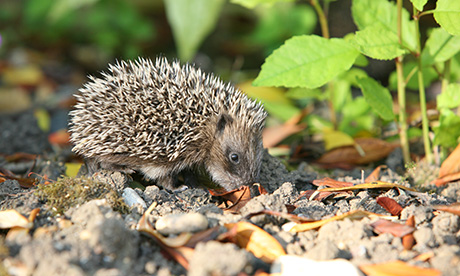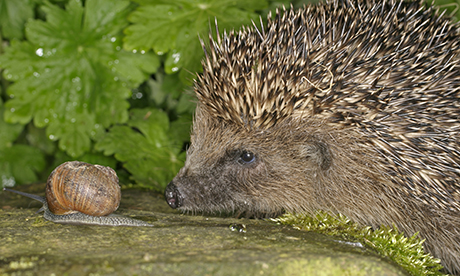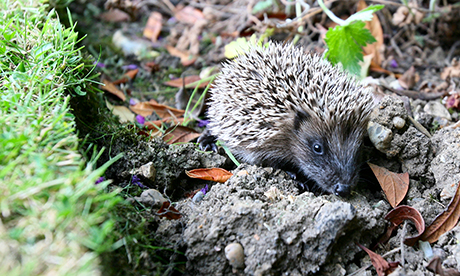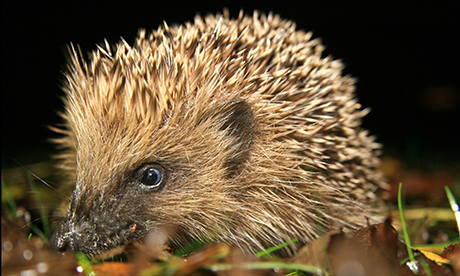Save our hedgehogs: numbers in continuing decline, report warns

Going the whole hog: conservationists call for measures to preserve hedgehog populations. Photograph: Steve Heliczer
Anyone whose family have been based in these parts for a few generations probably has parents or grandparents who have fond memories of seeing hedgehogs in their garden and even leaving out dishes of milk for them.
As it happens, milk – with the exception of hedgehog milk – is actually bad for hedgehogs, and you should instead offer them dog food or boiled eggs. Sadly, this knowledge is unlikely to come in handy nowadays since these prickly mammals are now absent from large parts of London.
That’s according to a duo of conservation groups, the People’s Trust for Endangered Species and the British Hedgehog Preservation Society, who last month teamed up to hold a summit about the precarious situation for these iconic and much loved creatures.
At the conference they launched a report that made for depressing reading, cataloguing as it did the stark decline of the European Hedgehog (Erinaceus europaeus), whose numbers have reduced by a third in our cities since the millennium and by half in rural areas.
The species faces a perfect storm of habitat loss, road traffic and pesticide contamination. The fashion for “tidy, sterile” gardens has been blamed, as have badgers, which can unroll hedgehogs and gobble them up.

A hedgehog sniffs out a snail. Photograph: Dave Bevan
A website that maps sightings of hedgehogs shows none has been reported in Hackney this year, meaning the closest one might get to ever seeing a hedgehog these days might be to visit the Shoreditch hedgehog mural created by Belgian artist ROA.
A nice piece of street art, it must be said, but no substitute for the real thing.
“There are very occasionally reports of hedgehogs seen next to wildlife corridors in Hackney – so things like the rail lines and canals,” says local ecologist Russell Miller from the group Tree Musketeers.
A couple have been seen in Clapton in the past two years, one was seen on Stoke Newington Common about two years ago, and one was seen near the West Reservoir several years ago, Mr Miller said.
“They are here in small numbers. There’s not the overwintering habitat, possibly pressure from dogs may be having an impact in some places – I don’t know whether that’s significant – as might the increase in foxes.
But the main factor affecting hedgehog numbers is cars. “Hedgehogs just don’t have a chance against cars, and there are so many cars on the roads.
“Until we reduce pressure from cars it is going to be very difficult for them to move around, other than through the wildlife corridors.
“That’s why it’s so important to expand the area they have to use by making as attractive as possible the area adjacent to the wildlife corridors.
“Their decline is indicative of the massive decline in biodiversity generally. If a small mammal that everyone knows and loves can go almost to the point of extinction locally, what chance do insects and other things that are less apparent have?”
Hedgehogs are “probably present” in Wick Woodland, along the railway verges that transect Hackney and in parts of Hackney Marshes and the wider Lea Valley.
But the bottom line is that if you do see one here, you can count yourself very lucky.

The garden favourite scuttles along a verge. Photograph: Stephen Heliczer
So is there any cause for hope that hedgehogs might once again become a feature of gardens in Hackney and elsewhere in London?
The People’s Trust for Endangered Species and British Hedgehog Preservation Society have drawn up a hedgehog conservation strategy to try and avert further freefall.
Small but significant hedgehog populations are known to exist in London green spaces including Regent’s Park, Wanstead Flats, Epping Forest and Hampstead Heath.
Tree Musketeers has installed special boxes for the animals to hibernate in at locations around Hackney and has helped widen hedges on either side of some rail lines to try and maximise their potential.
Installing hedges in gardens and making holes in fences to allow permeability also helps, since hedgehogs can roam surprisingly large territories.
Wildlife charities also advise gardeners against using herbicide on lawns and advocate planting a diverse range of nectar rich plants to attract the insects on which hedgehogs feed.
“Hedgehogs are important because their presence indicates a healthy environment.
“To see a generalist animal like this decline is very ominous because they are in many ways so tolerant of human activity,” says hedgehog specialist Henry Johnson.
“On the flip side, it’s encouraging to know that whatever we do to help hedgehogs will also benefit other wildlife.”
For more ways to help, and to report any sightings, visit hedgehogstreet.org

Photograph: Ali Taylor
